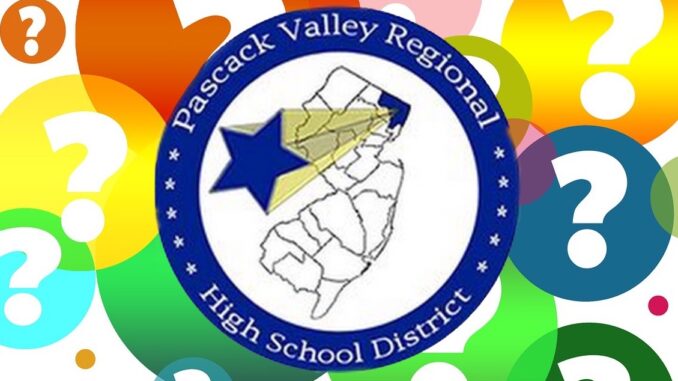
PASCACK VALLEY HS DISTRICT—Students at Pascack Hills and Pascack Valley high schools, along with staff and parents in the district, will be given school climate surveys in early 2022, part of a continuing effort to “commit more broadly to equity and inclusivity as a district goal,” district officials say.
Survey findings are likely by spring 2022, officials said recently. Parents can access all three climate surveys at pascack.org/district/school_climate_survey.
Earlier this fall, some parents had questioned the regional board about whether inappropriate, or unwanted surveys, had been given to students at its two high schools without parents’ approval.
This followed a state-mandated updating of the district’s school survey policy required by a new state law that outlined nine areas of “protected information surveys” also required parental notice and approval before questions falling under specific categories could be asked of students.
(See “School board hears from parents on revised survey policy,” Pascack Press, Sept. 24, 2021.)
Pascack Hills High School serves students from Montvale and Woodcliff Lake and Pascack Valley High School serves students from Hillsdale and River Vale.
After the school climate survey was discussed at the regional board’s Nov. 29 meeting by Dr. Mark Russo, district supervisor of diversity, equity and inclusion, the board posted all three proposed surveys on the district website.
Some parents have expressed concerns about questions on in-school surveys administered to students on sensitive topics.
Moreover, Superintendent Daniel Fishbein said the prior school climate surveys did not contain “protected information survey” questions.
Asked what action has resulted from previous climate surveys, district spokesperson Paul Zeller told us such surveys “have helped us to commit more broadly to equity and inclusivity as a district goal, which has led to the creation of a department of diversity, equity, and inclusivity.”
He said the district equity work includes:
- Leadership and goal setting, including the development of a district equity vision statement and the creation of a student equity leadership team;
- Data collection and analysis, including the ongoing implementation of school climate surveys and followup writing prompts; and
- Faculty education, including optional training through the New Jersey Consortia for Excellence through Equity, and collaborative action, including partnering with different student groups and the community equity partnership.”
The website notes that the New Jersey School Climate Improvement Survey addresses the following topic areas and who takes each survey. (“All stakeholders” refers to students, staff, and parents/caregivers.)
- Student sense of belonging (students only);
- Leadership support (staff only);
- Organizational resources and supports (staff only);
- Collegial support (staff only);
- Family support and engagement (staff and parents/caregivers);
- Academic culture and classroom practices (all stakeholders);
- Supportive staff/student relationships (all stakeholders);
- Supports for student social and emotional learning (all stakeholders);
- Behavioral expectations (all stakeholders);
- Negative student interpersonal behaviors (all stakeholders);
- Prosocial student interpersonal behaviors (all stakeholders);
- Student voice and involvement (all stakeholders); and
- Sense of physical safety (all stakeholders).
We reviewed the four-page, 17 question student survey posted online, which asks students to “click the button that best matches how you feel most of the time.” Some selected questions are previewed below.
Students are asked to indicate if they strongly disagree, disagree, agree or strongly agree that “Adults in my school respect students: 1) of all races and ethnicities and nationalities; 2) of all sexual orientations; 3) of all gender identities; 4) of all ability levels; 5) from all religions or cultures; and 6) whose families have more money or less money.”
For another question, students are asked to “press a button that best matches how you feel most of the time” whether an issue is not a problem, a small problem, a medium problem, or a big problem.
For most questions, students are advised to skip the question if they don’t know how to answer it.
“Think about how much of a problem these things are at your school. Students at this school pick on each other because of: 1) their race, ethnicity or nationality; 2) their religion or culture; 3) their gender or gender expression; 4) their sexual orientation; 5) their academic or learning ability; 6) their physical appearance; 7) how they move or walk; 8) how they speak; or 9) how much money their family has.
In another question, students are asked “How do you describe yourself? Check all that apply.” The choices presented are: 1) Boy/Male; 2) Girl/Female; 3) Transgender; 4) Non-binary; and 5) I use a different word(s).
We asked how prior surveys have helped to improve each school’s climate and culture.
Zeller said prior school climate surveys have given the district information about how students perceive different aspects of school culture.
“Having this information has helped us to know where our strengths are, as well as some areas for continuing growth. Key findings from previous surveys have been shared with administration, faculty, students, and parents, and these findings are taken into account in district decision-making,” he said.
